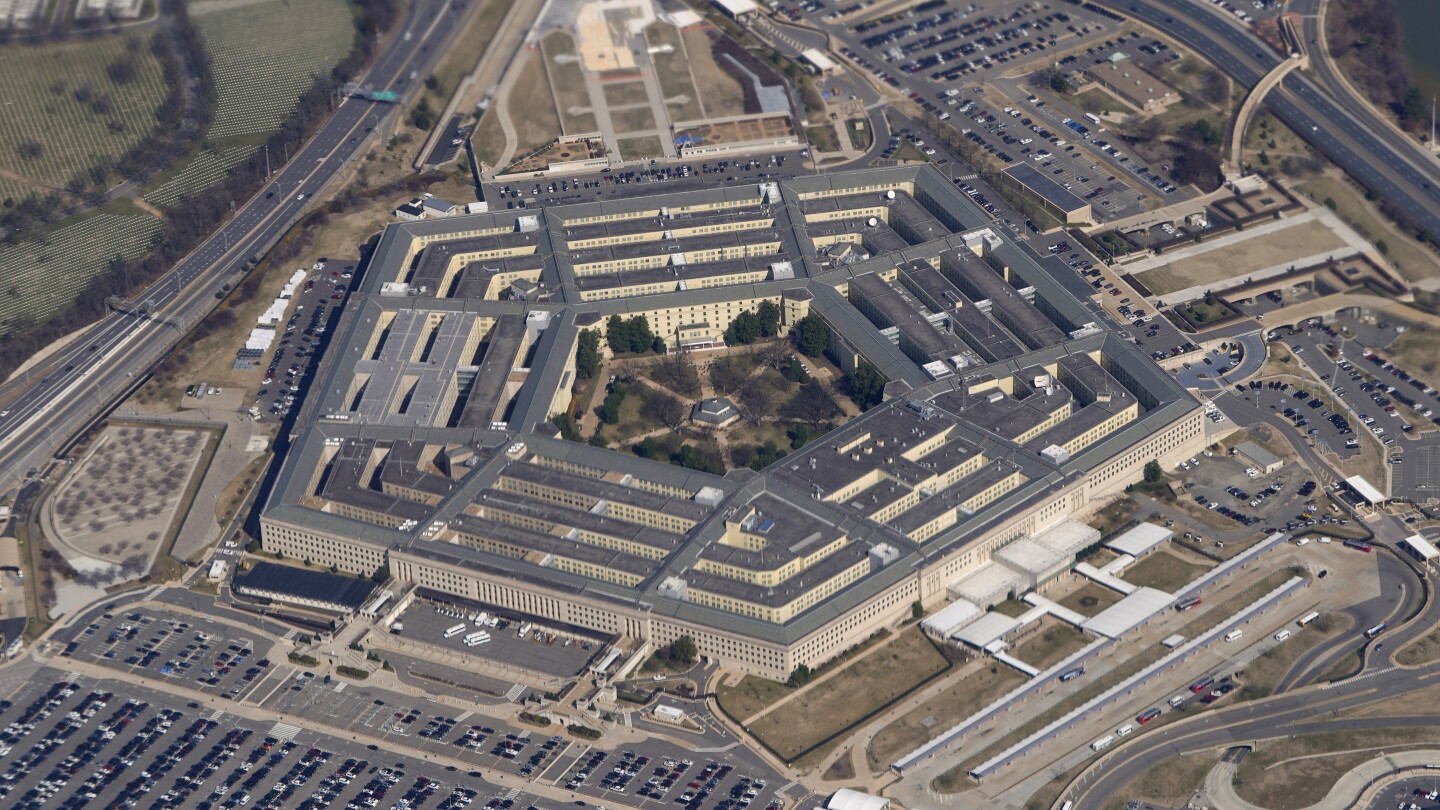WASHINGTON (AP) — The new Sentinel nuclear warhead program is 81% over budget and is now estimated to cost nearly $141 billion, but the Pentagon is moving forward with the program, saying that given the threats from China and Russia it does not have a choice.
The Northrop Grumman Sentinel program is the first major upgrade to the ground-based component of the nuclear triad in more than 60 years and will replace the aging Minuteman III intercontinental ballistic missile.
It involves not only building a new missile but the modernization of 450 silos across five states, their launch control centers, three nuclear missile bases and several other testing facilities.
The expansiveness of the program previously raised questions from government watchdogs as to whether the Pentagon could manage it all.
Military budget officials on Monday said when they set the program’s estimated costs their full knowledge of the modernization needed “was insufficient in hindsight to have a high-quality cost estimate,” Bill LaPlante, under secretary of defense for acquisition and sustainment, told reporters on a call.
The high cost overrun triggered what is known as a Nunn-McCurdy breach, which occurs if the cost of developing a new program increases by 25% or more. By statute, the under secretary of defense for acquisition then must **undertake a rigorous review of the program to determine if it should continue; otherwise the program must be terminated. **



Why?
Nukes don’t just disappear. We’ve got loads. We don’t need to be constantly making more.
Have you heard of a half life? Or a shelf life?
They have devices in them that break over time as all devices do, and those devices have parts and designs that were contemporary before the people working on them today were alive likely with architectural and design decisions that were operationally required back when things were being drafted that no longer make sense to do today. Likely the nuclear materials will be reused, but that’s me thinking with my brainbox and not actually a thing I know.
For an example of what happens when we continue to rely on tech that really deserves to be updated and/or replaced, see the United States banking sector as compared to basically everywhere else.
Removed by mod
Yo, that was really rude, fascist, blocked
That’s pretty dumb as well, choom.
This community has a power-tripping moderator deleting comments in the guise of safety, but really just censoring people.
Well all you had to do.is read the article.you are.blindly responding to to learn we are only making one bomb but updating 450 silos to not sound like such an idiot.
They actually do disappear, it’s called radioactive decay. Tuck in your ignorance, it’s showing.
They kinda do, the reason no one bothers to find nukes lost back in the 50s is because they arent nukes anymore, hell they may not even be explosive. Half life means that the nukes just kinda become not nukes after awhile.
No, half life is the amount of time it takes the element to decay halfway. For Uranium-238, that is ~4.5 Billion years. Uranoum-235 is ~700 Million years. Plutonium-239 is ~24,000 years.
The issue with old nukes is all the other components aging, not the nuclear material.
The half life on tritium for h bombs is only 12 years, so those components need to be replaced periodically.
H bombs don’t use tritium for their main fusion stage. Even Castle Bravo used Lithium-6. Tritium was used in initiators to increase neutron flux and as a fission booster for dial a yield (once again, to increase neutron flux). Both of those are just as important for fission weapons as they are for fusion.
Importantly, alpha decay creates helium pockets which is a neutron moderator and screws up the bomb.
And Lithium-7 accidentally. They didn’t realize that the Lithium-7 would produce a fuckton more tritium, which is how a 4-6 Megaton estimated yeild became a 15 Megaton actual yeild, causing us to basically nuke our own civilians and some Japanese civilian sailors.
Yeah, they thought lithium-7 was just junk that was left over because they couldn’t completely do isotope separation yet. Whoopsie daisy, looks like we irradiated a whole shitton of sodium and blew it all over the place along with our fission products from more completely fissioning the uranium tamper.
Incidentally that’s why Russia’s nuclear torpedo was called a radiological weapon. It wasn’t necessarily salted with cobalt, just the seawater is salted enough that when you neutron activate it you get a very nasty short lived gamma emitter that’ll ruin your day if you get sprayed with it just as much as any fission product.
See test Baker from Operation Crossroads, which wasn’t even a damn fusion bomb. They kept the sailors trying to clean the ships with goddamn radioactive water. https://en.m.wikipedia.org/wiki/Operation_Crossroads#Induced_radioactivity
On the one hand, yeah, more civilians need to know about this shit.
On the other hand, we really don’t need civilians knowing how to do this shit once we finally overthrow the vampires that are in control. Seriously. Dragons would have stopped extracting shit before now, even Adam Smith would have… I dunno what’s going on at this point.